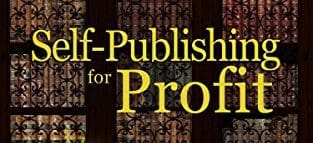
These days, “How to Self-Publish” books are a dime a dozen. Chris Kennedy’s Self-Publishing for Profit is $6.99 on Kindle, but it’s easily the best $6.99 you’ll ever spend if you’re looking to break into self-publishing.
Kennedy’s writing background is similar to that of many indie writers, which is to say, he’d never really been a writer until he suddenly had an idea that wouldn’t let go (in this case, the idea that became his book Red Tide: The Chinese Invasion of Seattle). Since then, he’s gone from never having written a novel at all to writing several series and an ever-growing universe with several other authors and running his own publishing house. All this said, it makes him a perfect teacher for new writers who are starting in a similar position.
This is what makes Self-Publishing for Profit stand out from other self-publishing books. Though its first three sections focus on information similar to what you’d find in other books – namely, marketing and engagement – the fourth is where the book becomes truly valuable for writing newbies. It outlines everything from how to figure out what kind of book you should write (Tip: Don’t just follow trends, and try to be niche when you can.), to creative writing tips he learned through trial and error, to a section literally titled “How Not to Look Like a Newbie.” Formally-trained writers won’t have much use for this section, but if you’ve barely ever picked up a pencil except to write a grocery list, this is the section for you.
Formally-trained writers, depending upon their experience with book production, will have some use for the fifth section, which outlines how to perfect a book for publication. This section covers the different types of editing (copyediting and content editing), how to go about finding editors, words to avoid, and simple ways to tighten up your writing. Before I started publishing, writing had been one of the defining elements of my life – the people around me have identified me as “the writer” since 4th grade, and I took as many creative writing classes as I could and even majored in creative writing at one point – and there were a few practical tips in this book that I hadn’t come across even in my years of study!
These sections, then, are a gem for the new and inexperienced writer. The subsequent sections, however, are invaluable for writers of all kinds. Sections six through nine cover the important details one must consider to give a book the best chance of selling. Section six covers basics like cover design, while section seven covers how to make the book available for sale as an eBook. Section eight, though, is where this area begins to shine, covering the many ways in which books can be repackaged for sale – as print books, audiobooks, or foreign-language editions – and providing the reader with the resources to make those versions happen. This is perhaps the most valuable thing about this book – for every piece of advice given, there are links to resources where readers can pursue that topic further. Section nine delves back into marketing, and the book ends with section ten, which explores what to do next, whether you want to continue producing books, or whether you want to figure out why your current book isn’t selling as well as you’d hoped.
All in all, Self-Publishing for Profit stuffs a whole lot of information into a small, quick, easy-to-read package. If you want to self-publish but have no idea where to start, this is a great place, and even if you already publish, it can’t hurt to give it a read. You’re bound to learn something new!
***
Note: Holo Writing is a participant in the Amazon Services LLC Associates Program and, as such, may earn a small commission from any product purchased through an affiliate link on this blog.

Leave a Reply